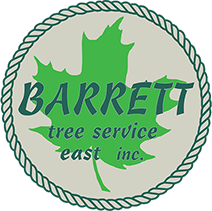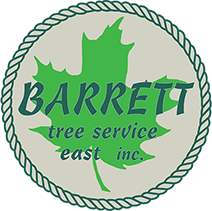Identifying Tree Diseases: Signs and Symptoms
Tree diseases can wreak havoc on your beautiful landscape if left unchecked. Understanding the signs and symptoms of common tree diseases is the first step towards maintaining a healthy and vibrant yard. Symptoms can vary widely depending on the type of disease, but some common signs include discoloration of leaves or bark, wilting, abnormal growths, and premature leaf drop. It's important to note that these symptoms can also be caused by non-disease factors such as drought, so careful observation is key.
Common Symptoms of Tree Diseases
Common symptoms of tree diseases often mimic those of other plant health issues. Discoloration, for example, can be a sign of nutrient deficiency or overwatering, but it can also indicate a fungal infection. Wilting, on the other hand, may be caused by root damage, but it can also be a symptom of a bacterial disease. Other common symptoms include stunted growth, leaf spots, and bark abnormalities. It's crucial to consider the overall health and appearance of the tree when trying to diagnose a potential disease.
Specific Diseases and Their Symptoms
While there are many possible tree diseases, some are more common in Cambridge, MA than others. For example, Dutch Elm Disease, caused by a fungus, leads to wilting and yellowing leaves, and eventually, tree death. Apple Scab, another fungal disease, causes dark, scaly lesions on leaves, fruit, and twigs of apple trees. Each disease has its unique set of symptoms, and understanding these can help you accurately diagnose and treat your trees.
Early Detection of Tree Diseases
Early detection of tree diseases is crucial for the health of your trees. The sooner a disease is identified, the better the chances of managing or even curing it. Early detection allows for prompt treatment, which can prevent the disease from spreading to other trees in your yard. It also minimizes the damage to the affected tree, increasing its chances of recovery.
Importance of Early Detection
Early detection of tree diseases is not just important—it's essential. Diseases can spread rapidly, and by the time visible symptoms appear, significant damage may already have been done. Early detection allows for prompt intervention, which can often mean the difference between life and death for your tree. Moreover, some diseases can spread to other plants or even structures, so early detection can also protect the rest of your landscape and property.
Techniques for Early Detection
There are several techniques for early detection of tree diseases. Regular inspection of your trees is the most effective method. Look for changes in leaf color, size, and shape, check the bark for discoloration or unusual growths, and observe the overall health and vigor of the tree. Using a tree disease identification guide can also be helpful. If you suspect a disease but aren't sure, don't hesitate to contact a professional arborist.
Treatment Options for Tree Diseases
Once a tree disease has been identified, the next step is treatment. The appropriate treatment will depend on the type of disease, the severity of the symptoms, and the overall health of the tree. In some cases, chemical treatments may be necessary. In others, non-chemical methods such as pruning and proper watering may be sufficient.
Chemical Treatments
Chemical treatments for tree diseases include fungicides, bactericides, and insecticides. These are often necessary for severe infections or when the disease is caused by pests. However, they should be used as a last resort, as they can have negative effects on the environment and non-target organisms. Always consult with a professional before applying chemical treatments to ensure they are used safely and effectively.
Non-Chemical Treatments
Non-chemical treatments for tree diseases include methods like pruning, proper watering, and improving soil health. Pruning can help remove diseased parts of the tree and prevent the disease from spreading. Proper watering and soil health can improve the tree's overall health and resistance to diseases. These methods are often effective for mild to moderate diseases and are generally preferred due to their minimal impact on the environment.
Preventing Tree Diseases
While treating tree diseases is important, preventing them in the first place is even better. Prevention involves maintaining the overall health of your trees and regularly inspecting them for signs of disease. By following best practices for tree health and conducting regular inspections, you can significantly reduce the likelihood of disease in your trees.
Best Practices for Tree Health
Keeping your trees healthy is the best way to prevent disease. This involves proper watering, fertilization, and pruning. Trees should be watered deeply but infrequently to encourage deep root growth. Fertilizer should be applied as needed, based on soil tests. Pruning should be done to remove dead or diseased branches and to maintain the tree's shape and structure. Healthy trees are more resistant to diseases and recover more quickly if they do become infected.
Role of Regular Inspections in Disease Prevention
Regular inspections play a crucial role in disease prevention. By regularly inspecting your trees, you can spot early signs of disease and intervene before the disease becomes severe. Inspections should be done at least once a year, but more frequent inspections may be necessary for trees that are already diseased or at high risk of disease. If you're not comfortable doing the inspections yourself, consider hiring a professional arborist.
Resources for Dealing with Tree Diseases
Dealing with tree diseases can be challenging, but you don't have to do it alone. There are many resources available to help you identify, treat, and prevent tree diseases. These include professional arborists, extension services, and a wealth of online resources. Knowing when to seek professional help and where to find reliable information can make the process much easier.
Professional Help: When to Call an Arborist
While many tree diseases can be managed by homeowners, there are times when it's best to call in a professional. If your tree is severely diseased, if the disease is spreading rapidly, or if you're unsure of the diagnosis, it's time to call an arborist. Arborists have the training and experience to accurately diagnose and treat tree diseases, and they can often save trees that would otherwise be lost.
If you're in Cambridge, MA and need professional help with tree diseases, don't hesitate to contact Barrett Tree Service East. We have the expertise and experience to diagnose and treat a wide range of tree diseases, and we're committed to preserving the health and beauty of your landscape.

